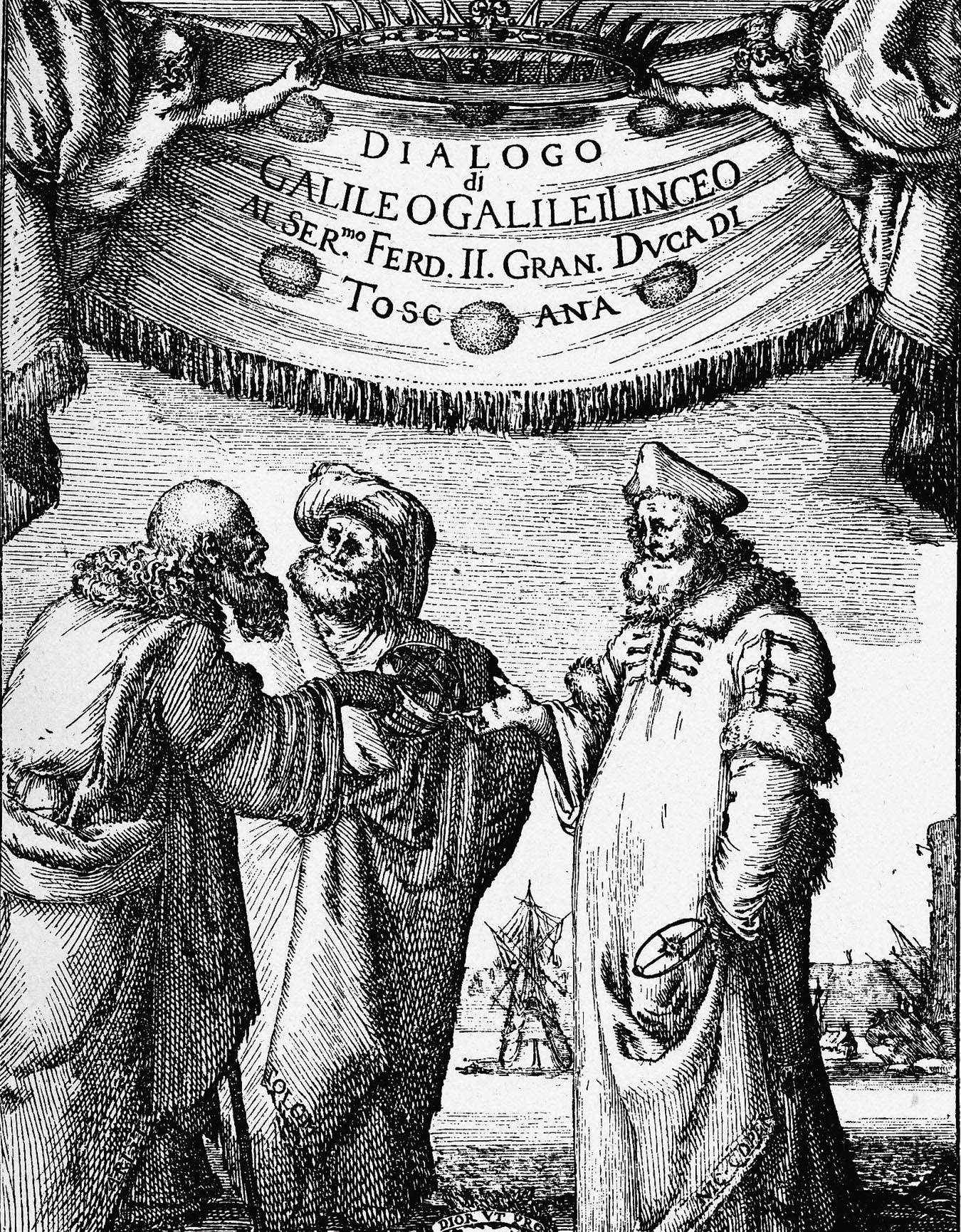Squaring the quantum computing circle
DOI: 10.1063/PT.3.5272
Currently awash in funding, educational efforts, and hype, quantum information science studies how to leverage the nonclassical properties of entangled quantum states to perform certain calculations more quickly than classical computers can. Examples include factoring large numbers, which is useful for breaking encryption, and finding the ground-state energy and structure of a molecule. Authors and curriculum developers striving to help novices understand quantum information science face a daunting task, and not just because the concepts and mathematics are difficult: It’s equally challenging to meet the learner where they’re at.

Perhaps the most famous dialog in the history of science is Galileo Galilei’s Dialogue Concerning the Two Chief World Systems, whose frontispiece, reproduced here, depicts Aristotle, Ptolemy, and Nicolaus Copernicus (from left to right). Their astronomical systems are discussed in the dialog.
STEFANO DELLA BELLA/PUBLIC DOMAIN

Alice Flarend and Bob Hilborn’s Quantum Computing: From Alice to Bob attempts to thread the needle between, in their words, “highly technical books aimed at professional scientists and engineers” and “general audience books that use almost no math.” The authors assume readers are familiar with high school physics and have a mathematical background that goes no further than trigonometry. Adding to the degree of difficulty of their deep dive, however, is their goal—which is thoughtfully implemented throughout the book—of preparing readers “to talk intelligently with the ‘experts’” and “dig into the more technical aspects of the field.”

The strengths and weaknesses of the book reflect the trade-offs that arise from those decisions. To facilitate communication with the quantum computing community, the authors introduce Dirac notation right from the beginning and take the time to help readers learn to translate back and forth between it and vector notation. (By contrast, many other introductions to entangled states use simplified, often pictorial, “toy” notations.) Operators are presented using matrices and several other representations, and the authors carefully connect quantum gates to those operations. To emphasize how quantum and classical computing differ, the authors introduce the classical AND and OR computing gates using the same notations they later use for their quantum counterparts. The authors work through basis changes for spin-½ systems in full mathematical detail except for some phase considerations that require complex numbers.
The authors’ slow, detailed treatment of the mathematics of entangled states and algorithms, however, means that readers need to reach page 100 before they learn about any common applications of quantum information science. A snooper-detection protocol, for example, exploits the impossibility of measuring, say, an ion’s x-component of spin without losing the ability to determine whether the ion’s z-component was spin-up or spin-down. Similarly, it’s not until page 160 that readers encounter quantum computing algorithms that enable fast searches of certain types, fast factoring of large numbers, and so on.
Other notable features of the book don’t involve trade-offs. Aware of the limits of purely lecture-based teaching, the authors sprinkle in exercises called Try Its, which are designed to help readers work out the details of a calculation or predict what would happen in a modified version of the scenario. I found those helpful.
Less successful is their adoption of a Galileo-style dialog structure in which the authors, Alice and Bob, chat with each other and a hypothetical student named Cardy. The student interlocutor provides a way for the authors to address anticipated questions and confusions without needing to write sentences like “You might wonder why the snoop can’t just reproduce the state of the qubit they measured.” But Alice’s and Bob’s voices are so similar that they are practically indistinguishable at times, and Cardy doesn’t consistently sound like a student.
Will the book reach its intended audience? It’s hard for me to judge because I’m (allegedly) not a physics and linear-algebra novice. As someone who has taken undergraduate and graduate quantum mechanics courses, I found that I could skim quickly through some sections of the book but needed to work slowly through others, even before I reached the discussion of quantum algorithms. I wonder if the treatment is too dense and purely formal to hold the interest of any but the most patient and persistent reader who hasn’t previously taken quantum mechanics and linear algebra courses.
A reader who hasn’t previously learned about certain concepts—such as spin-½ particles, why angular-momentum-conserving interactions between them produce entangled states, and how operators rotate or reflect or otherwise redirect vectors—might find parts of the presentation dense, dryly formal, and lacking footholds in physical reality or mathematical intuition. The lack of discussion of how quantum gates are physically realized—an unavoidable decision because readers would need at least an undergraduate physics background to follow such an explanation—reinforces the dry formality. In the end, the book might be best suited for current and former physics majors who realize they need a review of spin-½ systems when learning about quantum computing. People like me.
More about the Authors
Andrew Elby is a professor in the department of teaching and learning, policy and leadership, at the University of Maryland in College Park. His research focuses on how students learn physics and how teachers can help them do so.
Andrew Elby. University of Maryland, College Park.




